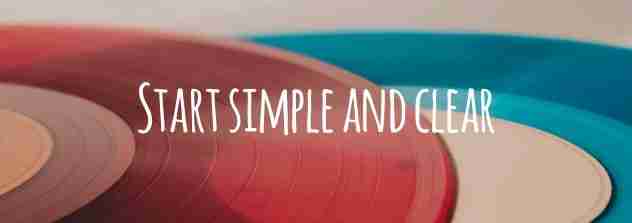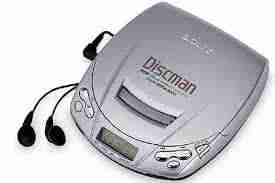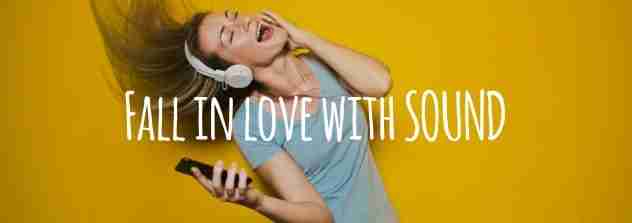With all the play-along sets and backing tracks available everywhere today, it’s becoming less and less common for people to learn tunes directly from recordings. I mean, why waste your time figuring out the changes when a simple search online can tell you what they are, what scales to play, and provide you with full band accompaniment right in the comfort of your own home?!?!
The reality is, if you’re learning tunes in a way that doesn’t include the recordings of the masters, you’re learning wrong changes, not using your ear, and in the long run making improvisation a whole lot more difficult on yourself.
Now you don’t need to stop being a real book player today if you don’t want to, but you should know that when you take recordings of the masters out of the equation, your missing THE ingredient that gives you what you need.
Wondering why it’s so difficult for you to play something meaningful over All the Things You Are, or Rhythm Changes? It all goes back to the way you ingrained the tune into your brain, fingers, and soul in the first place.
And yes, it’s more difficult, at first, to learn tunes directly from recordings, but it doesn’t have to be that painful…
In today’s world, we’re lucky. We have access to so many tools that make our learning more effective than ever…and I’m not talking about play-alongs…In fact, they are largely a huge distraction.
I’m talking about fast computers, great software, instant access to pretty much any recording and more!
We are SPOILED.
But so many people aren’t taking advantage of these tools in the right way, making learning tunes from recordings way more difficult than it needs to be…
Before you start playing your instrument, before you even start practicing a tune, and before you even enter the practice room, there are some little tricks you can do to best take advantage of your time and get the most from your practice.
With these tricks, you’re setting yourself up for consistent success and constant progress.
A little success will lead to more and soon you’ll want to learn tunes from recordings exclusively just because you’ve gotten so much from it. You’ll even wonder why you didn’t start doing it sooner…
Choose simple and clear recordings at first
There are a million recordings of nearly any jazz standard you want to learn, and with Youtube, they’re all at your fingertips. But the fact that we have more recordings to choose from than anyone in history has ever had when learning a tune is not necessarily a good thing…
When Miles Davis was learning Stella By Starlight, he wasn’t trying to learn it from Robert Glasper…
Or from Chick Corea…
Obviously, these versions of the tune didn’t exist yet.
Miles and other greats learned standards from recordings that laid out the chords very clearly and simply because that’s all that existed.
But, let’s take this a step further…
Not only should you choose a simple version for your first introduction to a tune, you should choose a recording where it’s easy to hear what’s going on.
When first attempting to learn the chord changes and melody of a tune straight from the recording, choose a version that:
- The bass line can easily be heard
- The chords of the comping instrument can easily be heard
- The melody is clearly played
- The changes are not reharmonized
- The tempo is slow enough to follow
This decision has nothing to do with how well you can transcribe or hear, it’s simply about how you do your research and make a selection. By choosing a simple and clear version, you’re setting yourself up to form a solid foundation on a tune.
Think about it like building a house. You need to lay the groundwork before choosing what color to paint it or what kind of fancy door knobs you want.
Your goal is to build a “Main Features List” of the tune that gives you a foundation to build upon.
Think high-level and get the MAIN pieces of the tune committed to memory directly from the recording by ear. You don’t have to get every chord. Just get the BIG places that the tune goes to and the overall form.
Now this doesn’t mean you can’t learn Stella from the Robert Glasper or Chick Corea version of this tune, but in most cases it will be more advantageous to start out with a simpler, and often older, version of the tune to hear and acquire the main features of the tune.
This version of Stella, although not in the common key, is a great example of something that’s easy to hear. Ella sings the melody very precisely and each chord is clearly played. This makes your job that much easier when trying to hear each chord and the relationships between them.
But remember, one recording is not the stopping point for your tune research…it’s the starting point!
START with a simple and clear rendition of the tune. Get the MAIN features of the tune:
- What are the big key centers the tune travels to?
- How does it travel to these places?
- Can you visualize these and think of them in terms of Roman numerals instead of chord names?
- What’s the form of the tune?
Then check out OTHER simple versions to fill in your feature list:
- What key(s) do people tend to play this tune in?
- What chords can you not figure out and where are these located? Take note of these places. With each recording, you’ll have new information to decipher them.
- What’s the typical tempo and feel of this tune?
- Are there places that differ harmonically between recordings? Take note of these and decide later if these are common places to use alternate changes for the tune.
The simpler and more clear the versions of the tunes you’re working with are, the easier it will be to answer all these questions, and the faster you can build a “Main Features List” of the tune in your mind.
Then, gradually progress to the more intricate and complex, and often newer, versions of the tune to hear what other players have done with it.
By starting simple and clear, you’ll not only better understand how others are interpreting the tune, you’ll have your own opportunity to take it in your own direction.
Get the right gear to streamline the process
When your process is set up to do what you want to do, you’ll do it more often and more effectively.
Be careful though, the inverse is true as well…
For years my practice set up was this: a portable disc-man CD player (remember those?), a bunch of play-along CDs, and a cheap set of headphones.
I thought, “How cool! I can practice and jam wherever I go!”
Little did I know that my path of least resistance in the practice room would funnel me toward practicing with play-alongs all the time.
Instead of working on language, or transcribing from recordings, I followed the path of least resistance that I created…
Years later when I realized this, I changed my process and gear to reflect the things I wanted to spend my time doing. Instead of making it easy to play with play-alongs, I made it easy to transcribe. Easy to work on language. Easy to work on tunes. Easy to write down my ideas. Easy to achieve my goals as a musician.
And here are some of the things that helped me do that…
- Transcribing Software – This is a must. Not only for slowing things down, but also for looping sections and navigating the track, Transcribe is amazing.
- Good Headphones– For someone who loves music, these are the best $60 investment you can make. A lot of times, it’s difficult to hear the piano voicing or the bass note. These make it sound as if the band is in your living room. If you’re trying to learn tunes from a recording and you’re having trouble hearing what’s going on, these will help tremendously.
- A Midi Keyboard– When you’re grabbing chords or a bass line from a recording, it really helps to have a keyboard in front of you to check your work and make sure you’re hearing everything correctly. I have three midi keyboards, but the one I use the most is this little Akai. I have it in front of me chilling in the living room, I of course use it in the practice room and I even take it to coffee shops. There’s nothing like figuring out chords to a tune while sipping a mocha chai late.
- Manuscript Paper – So you may or may not want to write things down when you transcribe. Everyone has their own process. I tend to learn a tune by ear straight from recordings, and later write down my favorite phrases or ideas. I prefer single sheets of manuscript paper so I can organize them however I like. Some people prefer notebooks. Either way, you should always keep manuscript paper nearby. You never know when musical inspiration will strike. Best to put it all down on paper and sort through it later.
- Sakura Micron Pen #8 – “Specific pens?!?!” You might think I’m crazy, but when you spend your life with this stuff you tend to have a lot of things you pick up on the way that you love, even as small as a pen. The bigger tip #8 in black is perfect for writing music. I love these and ever since I started using them, my penmanship has improved and my musical ideas have become more organized.
This is by no means a complete list, but these are some of the essential things that if you don’t own, learning anything from recordings is going to be a bit harder.
Anything that streamlines your process and makes it easier to hear is not only going to make the process easier, it’s going to make you better faster .
Make a STRONG Connection
Before you even start to work on a tune, you should form a bond with it…
How do you form a bond with it? You find a version of the tune that you absolutely LOVE. A version that makes your jaw drop. A version that puts a smile on your face. A version that INSPIRES you!
Then, you listen to it over and over and over. You listen to it while you commute. You listen to it while you workout. You listen to it as much as possible because you can’t get enough of it.
You have to get obsessed.
If you’re not singing the song in the shower because you love it that much, you’re not ready to work on it.
Now, this can be a different version of the tune than the simple and clear one you grabbed earlier because often the simplest, most clear version that you can quickly get the chords from may not be the most musically exciting version of the tune.
Here your purpose is different…
Earlier your purpose was to get a version to introduce you to the changes and melody of the tune as quickly and easily as possible. But with this trick, your purpose is to find a version of the tune that:
- Inspires you
- You enjoy listening to all the time
- Has a VIBE that you love and want to soak up
This “vibe” is tricky to put into words, but it matters a lot.
When you spend a lot of time with a recording, you absorb the vibe and feel of the recording. This “vibe” will have tremendous affect on how you think about, conceptualize, and play over a tune.
For example, the tune On Green Dolphin Street has a very different vibe depending on who you listen to…
What kind of vibe do you like?
Check out Wynton Kelly playing beautifully over this tune…
Or Perhaps you dig this Trane vibe…
https://www.youtube.com/watch?v=ePScRElDHOYBut did you notice that the vibe of both recordings is similar? Guess who’s backing up Trane there on the piano…Wynton Kelly. It’s no wonder they both have a great feel, energy, and vibrance to them.
Whichever version of a tune you select to form a bond with, remember that the vibe of the recording does have an affect on you, so be conscious of your choice…
And the other very important reason to form a strong bond with a tune before you practice it has to do with your motivation and your reasons behind learning a tune.
Your “Why”.
It’s not technical. It’s not hard. It’s a simple choice. But a VERY important one.
You see, with many tunes, we start to learn them but quickly get distracted by something else and never actually learn the tune well enough to add it to our repertoire.
And this all goes back to the “WHY” behind learning a specific tune. You’ve probably heard people say this before…
Your WHY is more important than your HOW.
“Why” matters more than “how” because the “why” is our internal motivation that keeps us going. We’ve written a million articles on how to learn a tune. The “how” is pretty straightforward, it just takes grit and dedication.
But when you learn a particular tune, what’s your “why”? Why do you want to learn this specific tune?
Is it to play it at a jam session? Is it because some list of tunes said you should know it? Or do you need to learn it for a class?
All of these reasons are valid, but alone, none of these reasons are that strong because they’re all external. If you have internal reasons for doing something, you’ll have a much higher percentage chance of completing it.
If your “why” behind learning a tune doesn’t stem from a true love and obsession, you’re probably not going to learn it that well. The stronger your “why,” the better you’ll learn the tune.
If you genuinely want to learn a tune because you heard one of your heroes playing it a certain way that inspired you so much and you have a tremendous internal desire to emulate the vibe and feel you heard, you’ll put in the necessary time to learn the tune on a deep level straight from the recording.
So upfront, make it a point to not only find a version or two of the tune that’s simple and clear that makes it easy for you to get the changes from, but to also discover a version of the tune that you absolutely love and form a connection with.
Think of this tune as your “why” behind learning the tune.
The more you connect with a tune, the more you’ll be motivated to actually learn it straight from the recording and stick with the hard work necessary to accomplish this.
Simple Decisions, Very Different Outcomes
The moral of the story: set yourself up for success before entering the practice room.
When you’re trying to learn tunes from recordings, this means doing your tune research up front. Finding simple and clear versions of the tune to build a strong foundation of the tune with and to extract the main features of the tune from.
It means getting the right gear that makes learning tunes from recordings a breeze. Setting up your practice room and process to reflect your goals is a must. We tend to follow the path of least resistance, so make that path the one you would want to take anyway by making it the most beneficial to your goals.
And it means forming a bond with the tune so that you’re not just learning some song because you think you’re supposed to, but because you want to more than ever. You love the tune that much because you heard Miles, or Trane, or one of the other incredible legends play the song and it captivated you so much that you feel compelled to learn it.
That’s what you’re going for and none of it even involves practicing. All of these are simple tricks you can do before you even get into the practice room to make your time there more efficient, more rewarding, and more fun!















